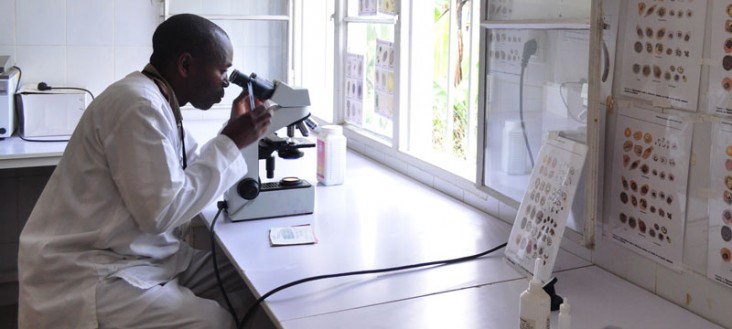- What We Do
- Agriculture and Food Security
- Democracy, Human Rights and Governance
- Economic Growth and Trade
- Education
- Ending Extreme Poverty
- Environment and Global Climate Change
- Gender Equality and Women's Empowerment
- Global Health
- Water and Sanitation
- Working in Crises and Conflict
- U.S. Global Development Lab

The first HealthTech cooperative agreement was signed in 1987 to support health technologies tailored for use in low-resource settings worldwide. Today, as part of the U.S. Agency for International Development's (USAID's) efforts to end preventable child and maternal deaths, HealthTech V continues to identify and advance technology solutions to the most pressing health issues in the developing world.
The strategic objective of HealthTech V is to develop, adapt, evaluate, and facilitate the introduction of affordable and appropriate technology solutions for the safe, effective, and equitable distribution of health services in low-resource settings for newborns and children, with a particular emphasis on advancement through commercialization efforts.
HealthTech V offers a range of services to achieve this goal:
- Supports early proof-of-concept and feasibility studies to identify and develop viable health technologies that are affordable, appropriate, and acceptable for low-resource settings.
- Introduces innovative health technologies in developing country settings, engaging local partners, and providing incentives for commercialization partners in order to promote sustainability.
- Supports scale-up to regional and global access and use of innovative health technologies.
Over the past two and a half decades, technologies developed and advanced through the HealthTech program have had a widespread global impact. More than 86 million HIV dipstick diagnostic tests and 185 million same-day malarial diagnostics have been put to use, providing quick, accurate, and potentially lifesaving information. More than 4.6 billion vaccine vial monitors have assisted safe vaccine deliveries worldwide, and SoloShot™ syringes have been used to deliver more than 6.7 billion vaccinations. The SILCS Diaphragm, a single-size non-hormonal contraceptive barrier designed to fit a range of women was launched under the brand name Caya® contoured diaphragm in many European countries and Canada. PATH is working to evaluate for the future introduction of Caya® in developing countries.
HealthTech V is a $24.4 million, 5-year cooperative agreement extending from September 2011 to September 2016. It is led by PATH in collaboration with the Public Health Institute (PHI), the International Federation of Gynecology and Obstetrics (FIGO), WHO, and UNICEF. Other entities engaged include the Kenya Medical Research Institute (KEMRI), the African Network for Drugs and Diagnostics Innovation (ANDI), CONRAD, MatCH-Wits, the Liverpool School of Tropical Medicine (LSTM), and the University of Bristol.
To learn more about the HealthTech V Project, visit the project website.







Comment
Make a general inquiry or suggest an improvement.